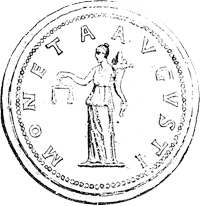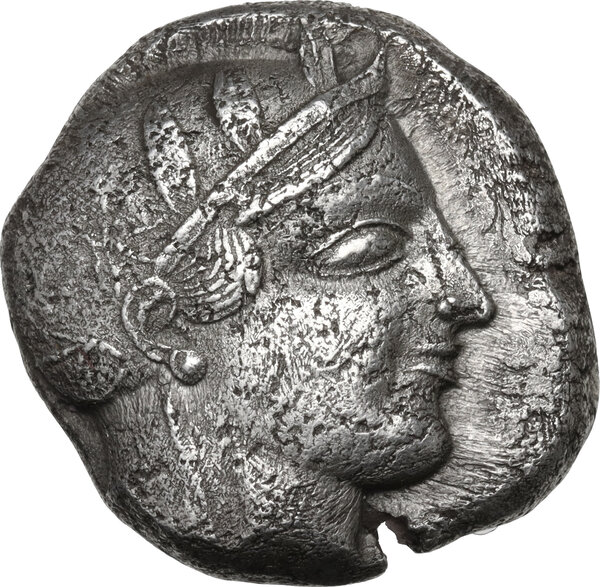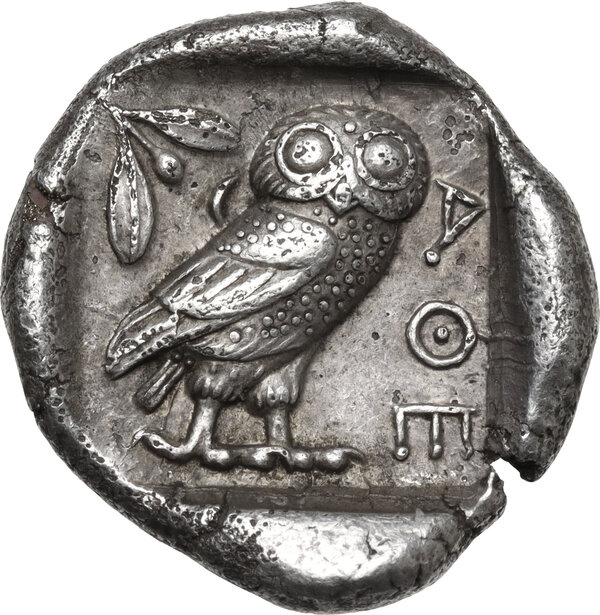Group IV Tetradrachm
Continental Greece. Attica, Athens. AR Tetradrachm, c. 475-465 BC. Obv. Helmeted head of Athena right, with frontal eye, wearing earring, [necklace with pendants], and crested Attic helmet decorated with three olive leaves over visor. Rev. AΘE. Owl standing right, head facing, with spread tail feathers; olive sprig and crescent to left; all within incuse square. HGC 4 1595; Starr Group IV; Svoronos, Monnaies, pl. 9, 8–12; SNG Lockett 1837; Rhousopoulos 1970.. 16.66 g. 25.00 mm. An attractive example of this interesting issue. Charming small owl in the incuse square, perfectly centred. Nicely toned with iridescent hues on reverse. Slightly rough obverse surfaces, otherwise good VF/About EF. Chester Starr arranged Athens’ coinage from ca. 480 until the mid 5th century into five groups, and his chronology is still widely accepted today (although the dating of his Group V coins is now considered too late). By the time of Starr’s Group IV, production of tetradrachms had steadily increased and the uptick in the number of required dies (and engravers) necessitated a greater standardization of style. On the obverse, the head of Athena changes little from Starr’s Group III – the goddess has a bold profile and retains her “archaic smile”; the hair on her forehead is arranged in two waves, with somewhat greater uniformity than previous periods; and on her helmet, her leaves float above the visor (sometimes referred to as a “laurel wreath,” these leaves were first introduced after the victory over the Persians in 480/79 BC). On the reverse, the owl’s rear leg is often stretched back, and her tail is split into three flared feathers. Owls of this period are generally smaller than those depicted on later issues, as is the size of the letters comprising the ethnic. (Triton XXII,2019,208 note).




